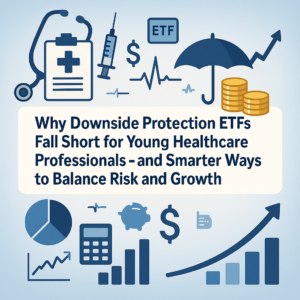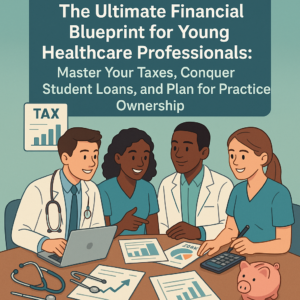Why Life Insurance Retirement Plans Can Undermine Your Financial Future: A Guide for Healthcare Professionals
Healthcare professionals—physicians, dentists, pharmacists, physical therapists, psychologists—are known for making informed, evidence-based decisions. Yet when it comes to retirement planning, many are lured by the promise of a “Life Insurance Retirement Plan” (LIRP). Marketing materials tout tax-deferred growth, guaranteed death benefits, and the idea of a “safe” retirement bucket. But beneath the polished brochures lie high fees, confusing rules, and potential tax surprises that can leave you worse off. In this guide, we’ll explore the hidden pitfalls of using permanent life insurance as your primary retirement vehicle and highlight simpler, more cost-effective alternatives.
What Is a Life Insurance Retirement Plan (LIRP)?
A LIRP refers to a permanent life insurance policy—often whole life or universal life—marketed for both protection and retirement savings. Key selling points include:
- Tax-deferred cash value growth: Similar to an IRA, your policy’s cash value accumulates without immediate tax liability.
- Guaranteed death benefit: Provides a payout to beneficiaries, regardless of market swings.
- Tax-free policy loans: Borrow against cash value without reported income—until you don’t.
Sounds attractive, especially if you worry about volatile markets or Social Security uncertainty. However, the reality often falls short of the sales pitch.
1. High Premiums and Hidden Fees Erode Your Returns
Permanent policies carry significantly higher premiums than term life for the same death benefit. Early-year payments mostly cover agent commissions and administrative costs. Over time, ongoing fees chip away at your cash value growth:
- Premium loads: Upfront costs deducted from your first payments.
- Cost of insurance charges: Increases as you age—often accelerating just when you need the cash value most.
- Administrative and rider fees: Additional policy features (e.g., accelerated death benefits) add to the cost.
After fees, internal returns on whole-life cash value typically range 2%–4%. Compare that with a low-cost, balanced index fund portfolio historically delivering 6%–8% annually. As a healthcare professional accustomed to analyzing outcomes, you’ll see why this gap matters.
2. Underperformance vs. Traditional Investments
With a brokerage or retirement account, you can:
- Customize asset allocation (stocks, bonds, real estate).
- Harvest tax losses in down markets to offset gains.
- Benefit directly from market rebounds.
Inside an “opaque insurance wrapper,” by contrast, you surrender transparency and flexibility. The insurer credits a stated rate—often well below market benchmarks—after subtracting fees. Over a 20-year horizon, that difference can translate into hundreds of thousands less in retirement funds.
3. The Tax-Deferred Mirage—and Its Downside
Yes, cash value in a life policy grows tax-deferred. But extracting it without a large tax bill is tricky:
a) Surrendering the Policy
If you cancel your policy, you owe income tax on the gain (cash value minus premiums paid). Example:
- Premiums paid: $150,000
- Cash value at surrender: $200,000
- Taxable gain: $50,000 in the year of surrender—likely pushing you into a higher bracket.
b) Policy Loans Aren’t Free Money
Borrowing against your cash value avoids immediate tax, but interest rates—often 5%–8%—compound over time. Decades later, the loan plus accrued interest can approach or exceed your cash value, risking an unintended policy lapse.
c) Policy Lapse: A Major Pitfall
Fail to pay a premium or trim your cash value too aggressively, and your policy can lapse. Lapsing triggers a full surrender event, reporting all gains as taxable income—often with no cash left to cover the bill.
4. Liquidity and Flexibility Issues
Unlike a 401(k) or Roth IRA, where you can take systematic withdrawals or qualified distributions, you’re locked into lifetime premium commitments with a LIRP. Options to access cash value include loans (with interest) or partial surrenders (with fees). Miss a payment, and you risk losing both cash value and death benefit—exactly when your health may have declined.
5. Who—and Who Shouldn’t—Consider a LIRP?
Permanent policies still have a place for some high-net-worth individuals seeking estate-planning tools or guaranteed death benefit buckets to cover estate taxes. But for most young healthcare providers building retirement wealth, the disadvantages outweigh any niche benefits.
- Not ideal for: Physicians and allied professionals seeking straightforward retirement growth.
- May work for: Multi-million-dollar estates needing life insurance to equalize inheritances or pay estate taxes.
6. Better Alternatives for Healthcare Professionals
Before you commit six figures to a complex insurance policy, consider these simpler, lower-cost vehicles:
- Employer-sponsored plans (401(k), 403(b)) with matched contributions.
- Individual Retirement Accounts (Traditional IRA, Roth IRA).
- Tax-efficient brokerage accounts for dividends, ETFs, and individual stocks.
- Municipal bonds or bond funds for stable, tax-advantaged income.
- Annuities—if you truly need lifetime income—after thorough fee and credit-risk evaluation.
7. Action Steps: Build a Transparent, Low-Cost Retirement Plan
- Run the numbers: Compare projected net returns of a LIRP to an index-fund portfolio over 10, 20, and 30 years.
- Assess real costs: Ask your advisor for a detailed fee breakdown—loads, insurance costs, administrative charges.
- Consult an independent, fee-only advisor: Look for a CFP® who operates on a flat or hourly fee basis.
- Diversify across vehicles: Use employer plans, IRAs, and taxable accounts to balance growth, income, and tax flexibility.
- Review periodically: Your career path and income may change—adjust contributions and allocations each year.
If you’re a healthcare professional seeking clarity on retirement planning, learn about our process or schedule a complimentary call with a fee-only advisor.
Conclusion
Life insurance has a critical role in protecting loved ones but generally should not serve as your primary retirement savings vehicle. LIRPs come with steep costs, opaque returns, and tax pitfalls that can derail your hard-earned nest egg. Instead, favor transparent, low-fee investments you can monitor and adjust—just as you would any evidence-based decision in your healthcare practice.
Your retirement deserves an approach built on simplicity, cost-effectiveness, and proven market returns. If you’re ready to craft a clear, customized plan, visit our About Us page and reach out. Let’s align your retirement strategy with your professional standards of excellence.






